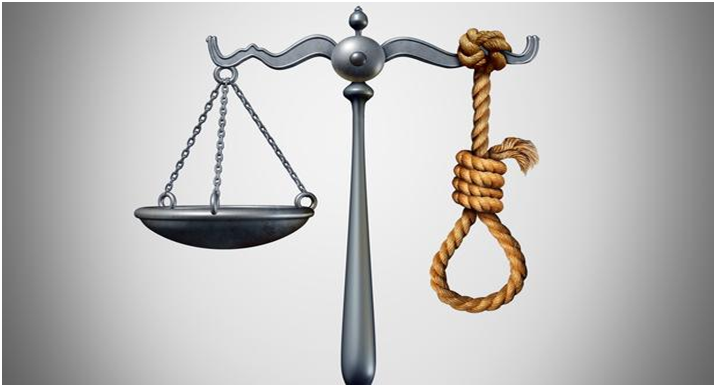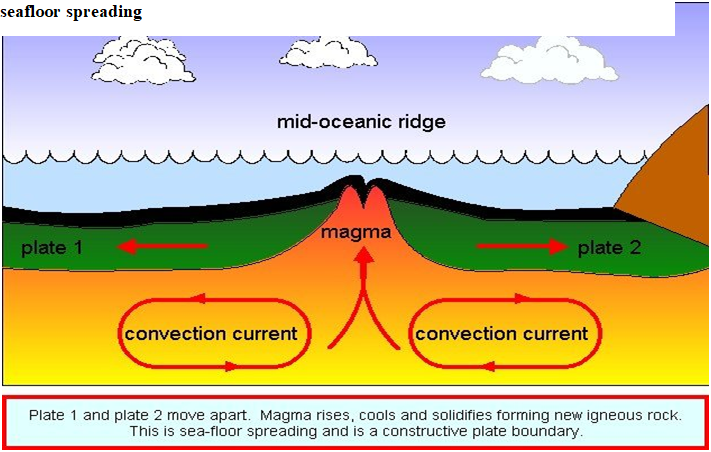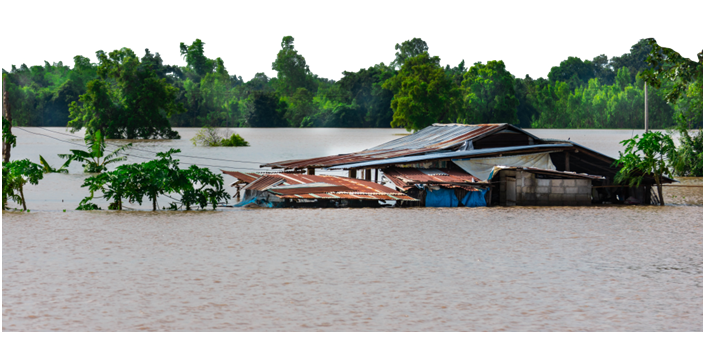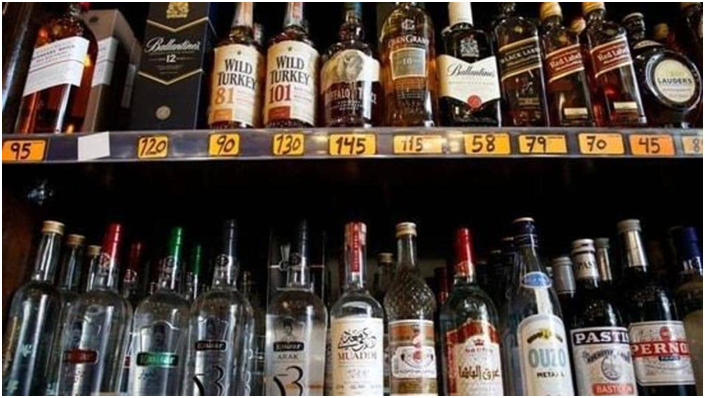What is the Supreme Court initiative on capital punishment? (GS Paper 2, Judiciary)

Why in news?
- A three-judge Bench of the Supreme Court has referred to a five-member Constitution Bench the issue of giving meaningful opportunity to those found guilty of a capital offence to present mitigating factors and circumstances so that they can better plead for a life term instead of a death sentence.
- The reference was made to resolve differences between judgments, mainly on whether it is necessary to hold the hearing on sentencing on a subsequent day and not on the day of the conviction.
- It is believed that an authoritative verdict on the question may lead to the judicial system making death sentences even rarer than it is now.
What does the law say on sentencing?
- The issue arises from the legal requirement that whenever a court records a conviction, it has to hold a separate hearing on the quantum of sentence.
- Section 235 of the Code of Criminal Procedure (CrPC) says that after hearing arguments, the judge shall give a judgment; and, “if the accused is convicted, the judge shall hear the accused on the question of sentence and then pass sentence”.
- This process gains significance if the conviction is for an offence that entails either death or life imprisonment.
- Section 354(3) says that when an offence is punishable with death or imprisonment for life, the judgment shall state the reasons for the sentence awarded, and if the sentence is death, “special reasons” for the sentence.
- Taken together, these provisions would mean that the sentencing hearing following the conviction of a person for a capital offence is a matter of great importance, as it would decide if the death penalty should be imposed or a life term will be sufficient.
- This would necessarily entail an inquiry into the nature and gravity of the offence and the circumstances in which it took place.
Bachan Singh vs State of Punjab (1980):
- Ever since the Supreme Court, in Bachan Singh vs State of Punjab (1980) laid down that the death penalty can be awarded only in the ‘rarest of rare cases’, the nature of the sentencing hearing has undergone a transformation.
- Besides the gravity of the crime, the circumstances of the accused also came to be examined to determine the suitability of the death penalty in a given case.
- Trial courts were required to balance ‘aggravating circumstances’ and ‘mitigating circumstances’ to decide the sentence.
What have courts said about the process?
- The Supreme Court noted in Bachan Singh that Section 235 is based on a recommendation in the 48th Report of the Law Commission, which had said that one of the deficiencies in sentencing policy was the lack of comprehensive information about the characteristics and background of the offender.
- The Commission had also suggested that gathering evidence related to the circumstances relevant to sentencing should be encouraged.
- Given this background, the Supreme Court said the trial court, while deciding the sentence, “should not confine its consideration ‘principally’ or merely to the circumstances connected with a particular crime, but also give due consideration to the circumstances of the criminal.”
- In a series of judgments, the Supreme Court has advocated that the sentencing hearing be done separately, that is, at a future date after conviction.
- However, in a contradiction of sorts, several judgments have upheld the practice of ‘same-day’ sentencing. Such a practice does not vitiate the sentence, the courts have ruled.
What are the views on same-day sentencing?
- Even though a separate hearing on sentencing is practised in all trials, most judges do not adjourn the case to a future date to go through this. As soon as the verdict of ‘guilty’ is pronounced, they ask counsel on both sides to argue on sentencing.
- There is a view that such ‘same-day’ sentencing is inadequate and violates natural justice as convicts do not get enough time to gather mitigating factors.
- A major premise for the current order of referral is that this process is hopelessly tilted against the accused.
- While the State is given an opportunity to present aggravating circumstances against the accused throughout the duration of a trial, the accused, on the other hand, is able to produce evidence showing mitigating circumstances in their favour, which may spare them the noose, only after their conviction.
What is expected from the reference?
- The Constitution Bench may lay down comprehensive guidelines on the manner in which sentencing decisions can be arrived at. It may make it necessary for the trial court to get to know the accused better before passing the sentence.
- Going beyond the reports of jail authorities or parole officers, the courts may draft the help of psychologists and behavioural experts.
- A study into the childhood experiences and upbringing of the accused, mental health history in the family and the likelihood of traumatic past experiences and other social and cultural factors may be mandated to be part of the sentencing process.
- This may mean that trial courts will be better informed than now, when only basic data such as educational and economic status are ascertained before a sentence is imposed.
Can increase in seafloor spreading speed up global warming
(GS Paper 3, Environment)
Context:
- Life on Earth began 3.5 billion years ago. But the life know today was shaped in the Cenozoic epoch, which began only 66 million years ago and continues to this day.
- During this period, mammals, insects, birds and flowering plants flourished on land, while fish, corals and molluscs thrived in the ocean. Earth transitioned from a hothouse with no glaciers to a cooler one with ice sheets at the poles.
Global warming before humans:
- However, between 14 and 17 million years ago, known as the Miocene Climatic Optimum (MCO) period, temperatures soared (around 10°C higher than today) and carbon dioxide (CO2) levels rose to 1,000 parts per million (PPM) against the current 419 PPM, leading to the disappearance of glacial masses and several species.
- Several such episodes of global warming in the past have always baffled scientists. Humans were not responsible for this warming as they arrived about 15 million years after MCO.

Latest research on mid-ocean ridge system:
- Understanding these factors is important at a time when human activities are already spewing greenhouse gases into the atmosphere, pushing the planet towards a climate tipping point.
- For the past seven years, researchers in the US and Hong Kong have been trying to solve this riddle by peering into underwater volcanoes that are spread across the seabed for 75,000 km along divergent plate boundaries, where tectonic plates drift apart.
- These volcanoes, known as the mid-ocean ridge system, spew molten magma from the Earth’s interiors, which gradually moves away from the ridge and cools down to form rocks.
- Since new ocean floor or crust is created during such seafloor spreading, to maintain the planetary balance, the Earth returns a similar area into the deep mantle elsewhere by pushing the older seafloor towards subduction zones, where the heavier tectonic plate sinks below a lighter one into the Earth’s interiors.
Impact of seafloor spreading:
- Scientists have long known that seafloor spreading rates impact CO2 levels.
- Faster spreading plates have more volcanic activity and inject more CO2 into the water, some of which eventually ends up in the atmosphere.
- They also influence sea levels. When plates spread rapidly, the entire base of the seafloor rises, as do sea levels. But during slow movement, the base and sea levels fall as the crust material cools.
- Using magnetic records of the seafloor, available in their complete forms for last 19 million years, researchers have mapped the spread rates of 18 major mid-ocean ridges.
Slowdown:
- In anearlier study, they write that the spreading has slowed by 35 per cent. Some 15 million years ago, the rate of seafloor spreading was 200 mm a year, whereas now, on average, it is 140 mm a year.But not all ridges moved alike; while some sped up, others slowed down.
- The fastest known spreading rate of a tectonic plate is 210-220 mm a year, roughly the rate of the growth of human hair.
- Slow plates spread less than one-tenth as much as their faster counterparts. Ridges along the eastern Pacific has such plates whose spread rates are nearly 100 mm a year slower compared to 19 million years ago, lowering the world’s average.
- The reduced rates in this region could be because the Pacific Ocean is getting smaller while the Atlantic and Indian Oceans are getting bigger. Overall, 15 of the 18 ridges slowed down.
How tectonic forces contribute to the global carbon budget?
- Studying seafloor spreading rates will show how tectonic forces contribute to the global carbon budget. Tectonic plates are known to recycle carbon. During volcanic eruptions at the ocean ridges, CO2 trapped in the lava escapes into the atmosphere.
- At subduction zones, the gas is removed from the surface when organisms such as corals and plankton die and sink to the bottom of the seafloor. Their shells, made of calcium carbonate, combine with sediments to form limestone that ferry the trapped carbon into the mantle.
- However, even here, some of the carbon escapes into the atmosphere when rocks melt at subduction zones. The CO2 in the interiors then charts its journey back into the atmosphere at mid-ocean ridges, continuing the cycle.
Similar study:
- They find that during the Cretaceous Period 145-66 million years ago, when dinosaurs dominated land, atmospheric CO2 levels shot above 1,000 PPM, taking the mean annual temperatures up to 10°C higher than today.
- The scientists used a computer model to simulate this hothouse world and found that the tectonic plates were moving quickly during this period, which doubled CO2 release from mid-ocean ridges.
- The study said 66 million years ago, when Earth entered the Cenozoic era, CO2 levels dropped to 300 PPM and the seafloor spreading slowed down.
Link between seafloor spreading rates and climatic conditions:
- In another study focused on the link between seafloor spreading rates and climatic conditions, they find that faster seafloor spreading are linked with higher CO2 levels during MCO period.
- During the MCO period, magnetic records show that total new crust production rate was 3.5 sq km per year due to fast-spreading plates. Since then, the new crust production rate has dropped to a little above 2.5 sq km a year.
- To estimate the levels of CO2, theyanalysed the ratio of boron isotopes found in fossils of foraminifera, a single-celled organism that builds complex shells using minerals in the seawater.
- Once it dies, it sinks to the bottom of the seafloor and get trapped in layers of sediment. The analysis shows that CO2 levels varied between 500-1,000 PPM during the MCO.
Way Forward:
- They plan further research on the factors that drive this slowdown and increase of spreading rates, and whether there is a pattern to be seen. Magnetic records, however, become increasingly incomplete farther back in time as they are destroyed at subduction zones.
At 41.5 mn, India tops the list of disaster-related displacements in South Asia
(GS Paper 3, Disaster Management)
Why in news?
- Recently, areport, titled ‘Disaster Displacement in Asia and the Pacific: A Business Case for Investment in Prevention and Solutions’, was released by Internal Displacement Monitoring Centre (IDMC) and the Asian Development Bank (ADB).
Details:
- At least 61.4 million people were displaced in South Asia between 2010 and 2021 because of natural disasters such as floods, cyclones, earthquakes, etc., with India topping the list with 41.5 million internal displacements.
- South Asia accounted for the third-largest share of disaster displacements in the region during 2010-2021 as the impact of climate change deepened.

Monsoon shift:
- In recent years, the region experienced shifts in flood duration with the El Niño Southern Oscillation variation playing a role in their frequency and intensity.
- In 2021, La Niña had weakened the monsoon season in South Asia, because of which fewer people were forced out of their homes compared to previous years.
- However, in India the monsoon lasted from June to October 2021 instead of September. It overlapped with the onset of the northeast monsoons, bringing unusually heavy rain and floods in southern states and triggering 312,000 displacements in Tamil Nadu in November.
- In 2022, the monsoon has been pretty erratic and uneven in India, with some states battling a deluge while others are facing a deficit, which affected the sowing season and the kharif crop.
- Though the India Meteorological Department (IMD) announced the withdrawal of the monsoon on September 20, a depression over the Bay of Bengal that moved northwards, coupled with a western disturbance, has brought in a fresh wet spell over northwest and other parts of India. The wet spell is expected to continue for the next couple of days.
Factors responsible:
- On an average, nearly 90 percent of the displacements triggered by floods in Asia-Pacific took place between May and August. In South Asia, most flood-related displacements happened between May and September, with June and July the most affected.
- As climate change contributes to prolonged and erratic monsoons, the impact of seasonal flooding in South Asia may continue to have devastating consequences.
- Climate change combined with rapid urbanisation and other factors may significantly increase future displacement risk and related costs.
- An UN Habitat report released in June 2022 had also warned that an increase in extreme weather and natural disasters such as flooding, heatwaves, and landslides will affect urban areas the hardest, making adaptation a matter of paramount importance.
- The Intergovernmental Panel on Climate Change (IPCC) report 2021 also warned of more frequent and intense heat waves, extreme rain, erratic monsoon, more cyclonic activity, and droughts in India.
Disasters & displacements in 2022:
- In 2022, very heavy pre-monsoon and monsoon rains triggered deadly floods and landslides across India, affecting millions of people in both urban and rural areas.
- In nearby Pakistan, hundreds of thousands of people have been displaced in one of the worst-ever floods since June.
- South Asia fared better than East Asia and Southeast Asia, which had the highest number of disaster displacements nearly two-thirds of Asia and the Pacific’s total between 2010-2021.
- There were over 225 million internal displacements in Asia and the Pacific, which was more than three-quarters of the global total for this period. Weather-related hazards such as rain and storm were responsible for 95 percent (213.5 m) of all disaster displacements across the region between 2010−2021.
- East Asia led with 75.9 million displacements or 33.7 percent of the total, followed by Southeast Asia with 69.2 million (30.7 percent). South Asia was third with 61.4 million (27.3 percent) of internal displacements between 2010-2021.
- Within South Asia, 58.6 million were displaced due to weather-related events: 37.4 million of them due to floods and 21 million due to storms, including cyclones.
- India (41.5 m displaced) was followed by Bangladesh with 14.1 million, Nepal with 3.3 million and Sri Lanka with 2.5 million internal displacements in South Asia.
- Pakistan, which has been categorised in Central and West Asia, had 16.4 million displacements. In East Asia, China fared the worst of all with 70.4 million displacements.
- Earthquakes triggered 2.9 million internal displacements in South Asia from 2010 to 2021, 92 percent of which took place during the Gorkha earthquake in Nepal in 2015.
- Cyclone Amphan over the Bay of Bengal in May 2020 displaced nearly five million in India and Bangladesh.
Economic losses:
- Annual economic losses caused by disasters in Asia-Pacific were estimated to be around $780 billion as of 2021, which is the equivalent of 2.5 percent of the regional gross domestic product (GDP).
- In the worst climate change scenario, these losses could increase to $1.4 trillion by the year 2059.
- Indigenous communities, among the worst affected, can play an active role in prevention, forecasting, and response as their in-depth understanding of the environment have long helped them battle disasters.
Way Forward:
- The ways forward suggested by the report include reviewing gaps in government efforts to monitor and address internal displacement, enhancing data collection and analysis to record the scale and severity, and developing policy frameworks to ensure immediate inclusive support to affected people.
- The report suggests investing in the planning and financing of durable solutions, assessing the risk of future disaster displacement to develop prevention plans, and strengthening regional collaboration across Asia and the Pacific.
Manipur revising its liquor policy
(GS Paper 2, Governance)
Why in news?
- The Manipur Cabinet recently decided to lift the prohibition partially for generating at least ₹600 crore in annual revenue.
- The decision did not go down well with organisations such as the Coalition Against Drugs and Alcohol (CADA) and MeiraPaibi, a social movement meaning ‘women torchbearers’, in a State used to the extremist-dictated ban on liquor since 1991.
How did prohibition come about?
- Manipur is geographically and psychologically divided between the Imphal Valley and the hills around it.
- Valley-based extremist groups, primarily the People’s Liberation Army, hijacked a mass movement against liquor and imposed a total ban. This led to the Manipur People’s Party government headed by R.K. Ranbir Singh enforcing prohibition in the State on April 1, 1991.
- The sale, brewing and consumption of liquor were subsequently banned for all residents excluding people from the Scheduled Caste and Scheduled Tribe communities who have been brewing it traditionally but not commercially.

Dry States in North-East:
- Total prohibition has been in place in two other north-eastern States flanking Manipur; Nagaland since 1989 and Mizoram, which reimposed total prohibition in 2019 after partially lifting a 1997 ban for four years from 2015.
- The church played a key role in imposing prohibition in these two Christian-majority States. There is no prohibition in the other five States of the northeast.
Did Manipur make a similar bid earlier?
- The current government is not the first to have pursued partial prohibition since the Manipur Liquor (Prohibition) Act, 1991, came into existence.
- His predecessor, OkramIbobi Singh amended the Act to lift prohibition in five hill districts — Chandel, Churachandpur, Senapati, Tamenglong and Ukhrulon July 31, 2002.
- It also contended that lifting the ban would allow local Manipuri brews such as ‘yu’, two varieties of which came to be associated with Assembly constituencies Andro and Sekmai, to be sold across the country. A wave of protests by civil society groups made Ibobi Singh drop the idea.
- Biren Singh tried to lift prohibition after coming to power in 2017. His bid to bring in the Manipur Liquor Prohibition (Second Amendment) Bill, 2018, met with stiff resistance from civil society and women’s organisations.
How have the pressure groups reacted?
- While extremist groups, pushed beyond the India-Myanmar border, have taken a backseat in Manipur, pressure groups have reacted strongly to lifting the prohibition and legalising the country liquor business. The focus of organisations such as the CADA is more on the local brews than the possible availability of India-made foreign liquor in stores.
- The CADA’s contention is that if country liquor is brewed commercially on a large scale for “export”, it could lead to the shortage of some indigenous Manipuri rice varieties and create a famine-like situation.
- The MeiraPaibi, on the other hand, does not want the government to make liquor flow in a State battling drug abuse.
- But anti-prohibitionists point out that the ban on liquor has not necessarily made Manipur; like Nagaland and Mizoram, a dry State. Alcoholic beverages of all kinds, most likely adulterated, are available at a premium.





